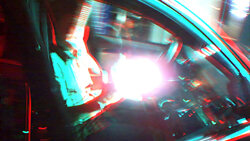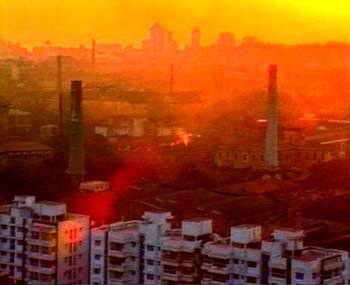image by chrissy griesmer
Cinemas, In Memoriam, July 1 - 22
curated by Emily Apter, Annie Horner, and Inney Prakash.
“I’ll never forget the most beautiful Christmas ever. All the lights in the cinema were off except the candles on the Christmas tree. Then I poured some wine into two glasses, one for me and one for the cinema...And then we toasted to our future. We wanted to be together for the rest of our lives. We had these illusions.” – Carmen Martinek, Carmen (Anja Solomonowitz, 1999)
“In mid-April 1966 I returned from half a year in Europe. The talk was of a new Times Square: It would bloom like Lincoln Center. Walk along the Deuce, though, and you felt the shabbier and shabbier theater fronts holding their breath....” – Samuel R. Delaney, ‘Times Square Red, Times Square Blue,’ 1999
We have spent much of our lives in darkness, seated among strangers, gazing upwards without regret. A lack has left us yearning. Even as we find ourselves “going back” to the movies, we remain ever fearful of an irreversible decline. Eulogizers return to their posts to spell the final end of theatrical moviegoing. We have heard their cries before.
But perhaps such harsh, banal, and often dull pronouncements have never been useful, as there are always forces that govern cultures and conditions of moviegoing and that enable the life and “death” of public space. The above quote from Samuel Delaney, excerpted from the preface to his treatise on Times Square’s porn theaters, underscores the particular precarity of brick-and-mortar social institutions. He goes on: Like many young people, I’d assumed the world—the physical reality of stores, restaurant locations, apartment buildings, and movie theaters and the kinds of people who lived in this or that neighborhood—was far more stable than it was.
Longing for a return to movie theaters, we indulged ourselves in films that captured their allure. We also thought about the ways they’re inextricable from their social conditions—the displacement of communities in The Case Against Lincoln Center, historical migration trends in Dawson City: Frozen Time, the exploitation of labor in Occupation: Mill Worker, and the fetishization and erotics of space in Carmen, among others.
These are films that offered us solace and solidarity over the last year. They made us reflect deeply, sometimes hopelessly, on the existential and material crisis forever faced by cinemas.
They increased our awareness of the ways cinemas have at times represented the side of oppression and destruction, but they also pressed our belief in the possibility of cinemas as an actively resistant force.
What we long for is not the magic of a big screen and sticky floors alone, but for a people’s cinema, able and willing to shift its design and function in alignment with the needs of its community. As ever, we ask ourselves: is there a way in which the resilience of cinema might be bound up with the liberation of humanity?
We’re proud to present the premiere of Art Jones’s AWOKE (excerpt), featuring a 3D scan of Maysles Cinema.
New digitizations of films by Rudolph Burckhardt and Helene Kaplan were made possible in cooperation with The Film-Maker’s Cooperative and Negativeland Motion Picture Film Lab.
Two films by Rudolph Burckhardt: Square Times & Sodom and Gomorrah
Square Times (Rudolph Burckhardt, 1967, 6.5 min)
A Saturday night on 42nd Street, from dusk to dawn. The glamour, the garbage, the hot dogs, the movies, the sex and the violence in the air – with music by The Supremes.
Sodom and Gomorrah (Rudolph Burckhardt, 1976, 6 min)
A documentary about the sex industry around 8th Avenue and 42nd Street.
Carmen
Anja Salomonowitz, 1999, 23 min
A documentary about the wondrous passion of Carmen Martinek, who takes movie theaters as her lovers.
"Sometimes I think that the cinema understands me." -Carmen Dido Martinek
She sees herself as being involved in a libidinous relationship with the cinema. Carmen does a little of everything at Vienna's Schikaneder cinema: She cleans and caresses it, and runs the projector. She strokes its seats and even sleeps there after long nights at the bar. It is, she admits, just like being with a person you couldn't live without. Anja Salomonowitz made a quiet little film about Carmen, observing her as she moves through the empty theater, as she puts in only brief appearances at home and immediately returns to the base station. After being forced to watch as her last theater was transformed into a supermarket, Carmen considers movie theaters to be erotic but also endangered environments. A person like Carmen is, for no better reason than such stories, the perfect star of a movie, and therefore it has the same name as she does: Carmen;
“23 minutes of documentary film, subtle and full of nuances” -Stefan Grissemann
Dawson City: Frozen Time
Bill Morrison, 2016, 120 min.
This meditation on cinema’s past from Decasia director Bill Morrison pieces together the bizarre true history of a long-lost collection of 533 nitrate film prints from the early 1900s. Located just south of the Arctic Circle, Dawson City was settled in 1896 and became the center of the Canadian Gold Rush that brought 100,000 prospectors to the area. It was also the final stop for a distribution chain that sent prints and newsreels to the Yukon. The films were seldom, if ever, returned. The now-famous Dawson City Collection was uncovered in 1978 when a bulldozer working its way through a parking lot dug up a horde of film cans. Morrison draws on these permafrost-protected, rare silent films and newsreels, pairing them with archival footage, interviews, historical photographs, and an enigmatic score by Sigur Rós collaborator and composer Alex Somers. Dawson City: Frozen Time depicts the unique history of this Canadian Gold Rush town by chronicling the life cycle of a singular film collection through its exile, burial, rediscovery, and salvation.
Memoirs of a Movie Palace: The Kings of Flatbush
Michael Blackwood, 2005, 47 min.
In August 1977, the Brooklyn Kings, one of five "Wonder Theaters" in the New York area, closed its doors and became property of the City due to unpaid taxes. There are plans to renovate and restore it to Brooklyn's cultural life as a multi-purpose theater by 2014.
When it opened in 1929, in the presence of Hollywood star Dolores de Rio, it offered movie premieres and Vaudeville and its 3676 seats were regularly filled by enthusiastic Brooklynites. Designed by Rapp & Rapp in a 'French Baroque' style, the lavish theater is remembered vividly by a generation of locals who were looking for affordable diversion in palatial surroundings during the harsh Depression years.
In 1979 the documentary filmmaker Christian Blackwood assembled local aficionados of the erstwhile palace as well as its projectionist, its organist, Vaudevillians, the theater's manager, ticket sellers, popcorn vendors and ushers to reminisce about the Kings and those charmed days. "Memoirs of a Movie Palace" narrated by Eli Wallach is a journey through the ups and downs of this "Wonder Theater", that may come back again with an entirely new creative agenda.
*Please that this film will only be available for streaming through July 15.
The Vestal Theatre
Helene Kaplan, 1971, 10 min.
The Vestal Theatre is a documentary shot in the lobby of a movie theater from behind the candy counter. The camera was turned off only when it ran out of film. It was shot sync-sound fixed camera. The movie goers could see the camera clearly (no Allen-Funt cute). Like Monet's cathedral, this same image would never have been the same again. The image is composed of complex, multilayered planes of focus. And I love the way people ask for popcorn and tap their dollar bills. Film time and real time are the same.
Sacred Places
Jean-Marie Teno, 2009, 71 min.
In this documentary, African film director Jean-Marie Teno compares expressions of popular culture in a poor district of Ouagadougou, the capital of Burkina Faso. Sacred Places is a portrait of two people: Bouba, the owner of a cine-club that screens cheap DVDs of mostly action films for audiences of 10 to 15 people, and djembe player Jules Cesar, who says his instrument is "cinema's big brother" because it held Africans under its spell long before the arrival of film.
The cine-club is having trouble staying afloat, and the fact that its activities are illegal doesn't help: the DVDs come from a normal video store and are only intended for home use. But Bouba emphasizes the importance of cinema to his impoverished customers: cinema is a relief from the drudgery of daily life and brings people in contact with another world.
It is not without reason that Teno chose to make a dual portrait. Whereas the local film culture is beset by the complexities of distribution problems, failing equipment, and rights issues, djembe culture is simple and direct. This is an inspiring and entertaining reflection on the future of African cinema.
The Case Against Lincoln Center, caso en contra del Centro Lincoln, El
Newsreel, 1968, 12 min.
To keep the well-to-do from continuing to flee the city and depleting its tax base, city, state, and federal government, and the Rockefellers, Morgans, and Mellons finance the prestigious Lincoln Center for the Performing Arts. It was built in the middle of a Puerto Rican ghetto, displacing thousands of families and a lively street culture. Upper-income families move into high-rise apartment houses and gourmandise the "humanities," financially inaccessible and culturally irrelevant to the lives of the former residents.
America At War
Ken Jacobs, 2011, 31.5 min.
Ken Jacobs writes: "Innocent movie-goers never given a chance, captured...in 3D while other Americans invade, bomb and burn to protect our freedoms (to invade, bomb and burn). They are civilians, with bodies and thoughts far from war. Distance protects our serenity, our amiable enjoyments. Innocent monsters? Perhaps."
AWOKE (excerpt)
Art Jones, 2021, 6 min.
During a social pandemic, the empty cinema becomes the access point for memories: both real and imagined.
Music Palace
Eric Lin, 2005, 9 min.
Once a central part of communal life, Chinatown's movie palaces are nearing extinction. As New York's last Chinatown movie theater is about to close, its caretakers ruefully look back at the life that was.
Occupation: Mill Worker
Anand Patwardhan, 1996, 22 min.
Textile mills were once the backbone of Bombay’s economy and provided the city its working class culture. Today, foreign investment and rising real-estate prices have made selling mill lands more profitable than running mills.
Occupation: Millworker records the inspirational action of workers who, after a four-year lockout, forcibly occupied The New Great Eastern Mill.
All of Anand Patwardhan’s films can be viewed at Ovid.tv.
Glow Job
Cheol Min Im, 2018, 80 min.
During the 1960-90s, several theaters and public spaces in Seoul and other cities—such as Pagoda theater, Keukdong theater, and Seongdong theater—had been appropriated as the crucial ‘cruising spot’ by male sexual minorities. Upon neoliberal development of techno-lifestyle, South Korea turned into a virtualized network society and the advent of internet and smartphone applications has led to more private and anonymous ways of meeting each other for male sexual minorities than ever before. Now the main stage of cruising has moved from the physical spaces to the virtual fields. It seems there is no spatial validity for the Cruising Spot any longer.
Glow Job is a multi-scaled project woven from bodies, movies, and cruising spaces focused on several theaters which have been vanishing or have already vanished in Seoul. This film attempts to find out how we can face left debris of history through movies, revealing the condensed and vanished past-space and simultaneously reconnecting it to the present. Glow Job is also a part of a ritualistic project performed inside and out of the screen.

















